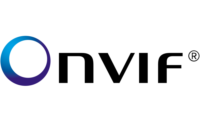Almost all integrators and manufacturers agree that standards are and will continue to be a good thing for the industry. When it comes to integration between access control and video, two of the main standards bodies are ONVIF and PSIA (Physical Security Interoperability Alliance).
“I think ONVIF and PSIA are doing as good a job as can be expected from an industry with very little regulation,” says Chris Sincock, DAQ Electronics LLC. “All these organizations that are attempting to create standards are definitely helping and it is forcing manufacturers to be more open.”
However, these standards are still in the relatively early stages of development and adoption.
“The challenge today is that standards are very dominant at the device level and more so with video than access,” says Chris Koetsier, Honeywell Security.
“Standards at the host or software level are far less mature and almost non existent. Ultimately standards need to be at this level to be more flexible.”
ONVIF is still more video-oriented while PSIA is more general. And both still need to be more widely adopted in the field for both disciplines (and beyond) to have any teeth.
“We began primarily as a standards organization for video and that is where a lot of effort was placed in the beginning,” says Per Bjorkdahl, chairman,
ONVIF steering committee. “In the past two to three years there has been quite a bit of activity in access control. Our desire is to play an important role
in that scenario.” ONVIF’s new Profile C is an access control standard that covers door monitoring and control. “It covers the basics, but it is a beginning,” Bjorkdahl acknowledges. “We understand it is just a first step.”
PSIA was formed to include more security technologies from the outset, says David Bunzel, executive director, PSIA, Santa Clara, Calif. “From the start we had a broad range of companies in all different parts of the security business.
“Our spec was designed to address whole industry needs. But there is a mindset in the industry that some people want proprietary specs to keep a tight control of customers. We are trying to satisfy a reasonable set of needs while not taking away the ability to have proprietary features. We want to do the heavy lifting on the 25 percent or so of the cost in the field that is custom coding, yet still allow for differentiation in features.”
This approach, as well as ONVIF’s means that the standards tend to be more general, and may leave some features on the table.
“It is correct that you do not get 100 percent of the feature sets using ONVIF,” Bjorkdahl says. “But if we can find a level where we can do 80 percent
of the deployment we can establish a common denominator for a useable system even if it is a compromise. If you can get a broad enough base, the burden
to develop that extra 20 or 30 percent of features is less.”
Manufacturers and integrators both understand and appreciate this. However, one area they agree on is a desire for more accountability.
“An element that should be there to create confidence that when they plug A into B it will work properly is an independent body that is certifying the nature of the interface,” says Jeremy Krinitt, general manager, Frontier Security LLC. “That would light a fire under standards and the integrator’s ability to have confidence in that integration.”
As it stands now, that is not always the case.
“Quite often the manufacturer says it is an ONVIF device so it will talk to our equipment,” says David Alessandrini, vice president, Pasek Corp. “The intent is great, but in reality it doesn’t always work. Some manufacturers do a better job than others.”
Both ONVIF and PSIA have entertained the idea of independent testing and certification. One problem is who would pay for it? There is no government regulation as on the safety side with UL. In the meantime, each has internal mechanisms to provide “quality control.”
Both ONVIF and PSIA try to make the automated process as stringent as possible, using rigorous software-based test tools.
“With any standard if you don’t have a good set of testing and compliance procedures, interoperability is going to be really dicey,” Bunzel says. “We have a robust set of test software-based tools. It is self testing but with standards that make it challenging to vary from the tool. The tool will not provide a compliance
document unless they pass.”
In addition, ONVIF just last April added an observer level membership, with the intent to add transparency to the process.
“It should not be perceived as we are giving up on independent certification,” Bjorkdahl adds. “We are giving more people the ability to verify that it does
work. They have to depend on what the manufacturer is saying and now there is a process to say a product didn’t work correctly. We want the manufacturers
to understand they can be scrutinized.”
Only time will tell the ultimate role standards will have in integration. But Bunzel stresses that integrators, too, can play a key role in getting standards
more widely accepted.
“The message I would advocate to integrators and consultants out in the field is that they need to start recommending standards-based solutions whenever available. There may not be as many as they would like right now but that would start this whole momentum of companies working on it.”
Jimmy Palatsoukas, Genetec, agrees. “As a company we are in a wait and see mode. If a standard starts to get adopted and end users want it, we will definitely
be on board.”



